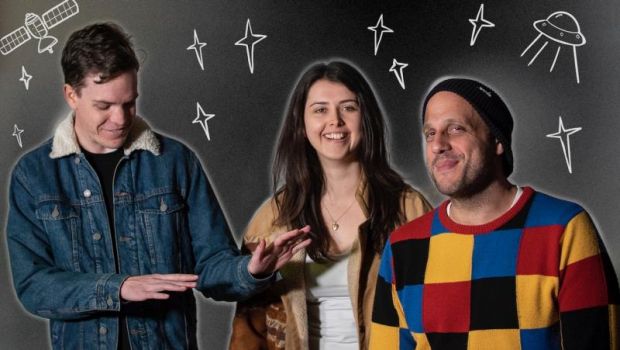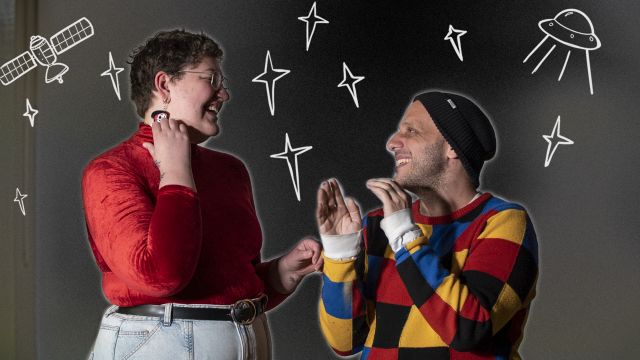After All This
Image: Caitlin Ellen Moore (Producer) and Nate Troisi (Director).
First, a confession: I love Rumpus. Its imagination, creativity and diversity are wonderful – and that’s just the audience waiting in the foyer before a show. What it does on stage, or as is sometimes the case, everywhere in the Rumpus building, is just as wonderful – and provokes thought, conversation and change. It takes immense courage (and strong funders) to stage relatively unknown productions, or to create new works that just don’t conform to what most people would think of when you tell them you’re going to the theatre. You don’t come here to observe from your seat in a dark room – you will be immersed, occasionally involved, often confronted.
After All This was originally conceived ten years ago by Marcel Dorney of Brisbane’s award-winning company Elbow Room. The creative team behind this South Australian premiere, led by director Nate Troisi and producer Caitlin Ellen Moore, have crafted a triptych of history where the unknowns of life after death are debated.

The three scenes are unconnected in terms of location, character, and narrative: the single thread that joins them together is the tension of what we believe stretched to breaking point by our curiosity to understand why we believe it.
The first explores that anger you feel when your young brain works out the untruths that your parents preach; the second, what happens when you try to use science to explain the nature of humans and gods. The third is a lesson in the power of dogmatic belief – and each takes place in a different part of the Rumpus building. Unlike last year’s brilliant ‘Hamlet in the Other Room’, we don’t choose our own adventure – we are guided by the performers to the next space.

This experience is immersive, and because the performers emerge from where we’re sitting and drinking before the show, or from the audience progressing to the next scene, the production doesn’t want to talk about the individuals in front of us (you can read the biographies of the creative team after the show, through a QR code to access the program) – and that’s okay, because it is an ensemble piece, and none of the performers disappoint. There’s a genuine connection between them, a comfortable, unforced intimacy they’re happy to share with us, and it softens the blows of the difficult words coming our way.
The set is minimal, starting with comfortable chairs, but moving quickly to a stage without set. The sound dips us deeper into the experience, and the lighting is sparse – and more impactful when its changing state tells the story.
The disconnect in story does jar though – the theme grows, challenges, amuses, educates – and then it’s over. Or is it? Having spent the last hour and a bit unsure if the people around you are audience or performer, a number of us waited uncertainly in the foyer, expecting something more to follow.

Yet it’s not intended to wrap up a satisfying ending: this production is a thinker. You won’t necessarily walk out feeling happy with how you’ve been entertained. You will be pondering the questions asked and the answers given, contemplating your own views on motivation, faith, and dogma; you’ll be asking yourself ‘why?’. And you’ll still be meditating on this as you sit on the bus the next morning.
Mark Wickett
Subscribe to our E-Newsletter, buy our latest print edition or find a Performing Arts book at Book Nook.

